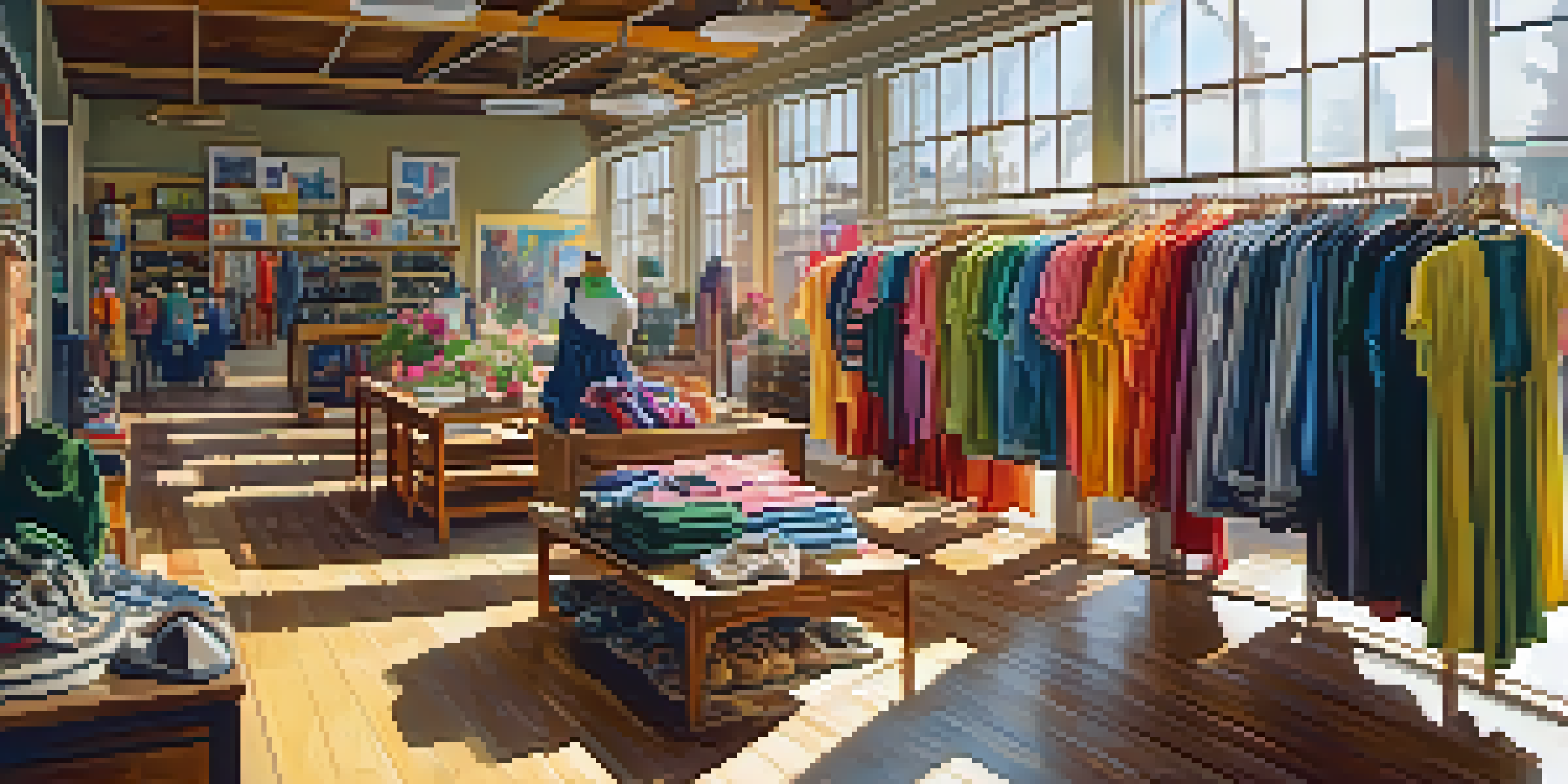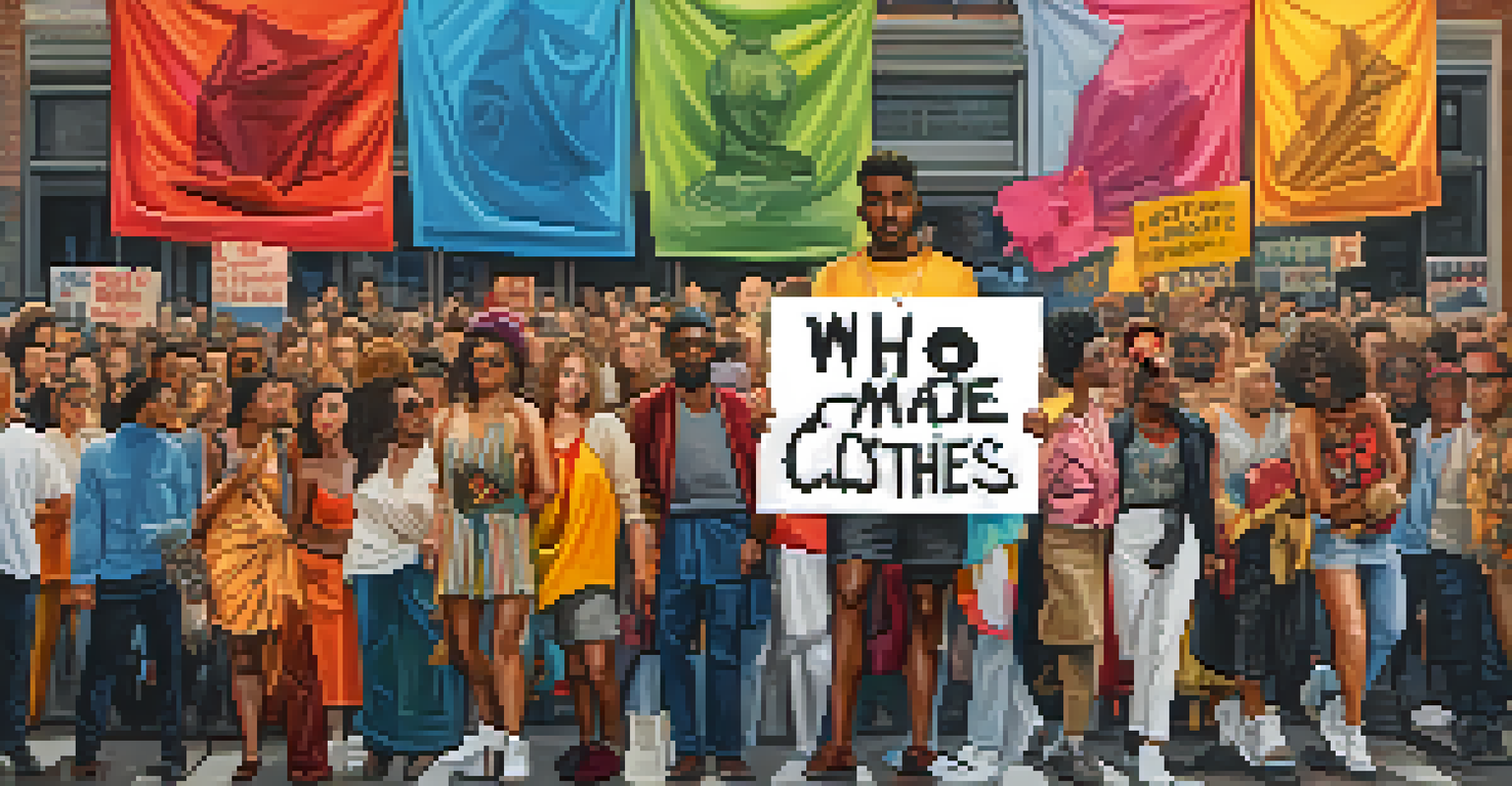Activism in Fashion: How Consumers Drive Change

Understanding Consumer Activism in Fashion Today
Consumer activism is becoming a powerful force in the fashion industry. It represents the idea that shoppers are not just buying products; they are making statements about their values. From sustainable materials to ethical labor practices, consumers are now more informed and deliberate with their choices.
The most powerful tool we have as consumers is our ability to vote with our wallets.
As social media amplifies voices and movements, the impact of consumer demands is stronger than ever. Brands are responding to calls for transparency and accountability, realizing that their reputation depends on how they align with consumer values. Just think about how a single tweet can spark a global conversation—it's astonishing!
This shift in consumer behavior is not just a trend; it's a fundamental change in how fashion operates. Companies that fail to adapt risk losing relevance, while those that embrace activism can build loyal communities. Ultimately, consumer activism is reshaping the landscape of fashion, making it more responsive to societal needs.
The Rise of Sustainable Fashion Choices
Sustainable fashion has emerged as a key focus area for activists and consumers alike. With growing awareness of the environmental impact of fast fashion, many are seeking alternatives that prioritize sustainability. This shift means supporting brands that use eco-friendly materials and ethical production methods.

Take, for example, the popularity of thrift shopping and upcycling. Many consumers are now opting for second-hand clothing, reducing waste while also finding unique pieces. This trend demonstrates that style and sustainability can go hand in hand, allowing individuals to express themselves while making a positive impact.
Consumer Activism Shapes Fashion
Shoppers are making informed choices that demand brands align with their values on sustainability and ethics.
Moreover, major retailers are starting to incorporate sustainability into their business models. From H&M's Conscious Collection to Patagonia's commitment to environmental activism, brands are listening to consumer demand for greener options. The message is clear: sustainability is not just a buzzword; it's a movement that consumers are driving forward.
Inclusivity and Representation in Fashion
Activism in fashion also emphasizes the importance of inclusivity and representation. Consumers are demanding diversity in size, race, and gender within the industry. This push for inclusivity means that brands are rethinking their marketing strategies and product offerings to cater to a broader audience.
Fashion is the armor to survive the reality of everyday life.
For instance, the rise of plus-size models and campaigns that celebrate different body types shows a shift towards a more inclusive narrative. This change not only fosters a sense of belonging for consumers but also encourages brands to be more authentic in their messaging. It's about creating a space where everyone feels represented.
Ultimately, inclusivity is not just a nice-to-have; it's essential for brands that want to thrive in today's market. As consumers advocate for greater representation, the fashion industry must evolve. When brands genuinely embrace diversity, they not only improve their image but also create a more enriched shopping experience for all.
The Impact of Social Media on Fashion Activism
Social media platforms have become powerful tools for fashion activism. They allow consumers to voice their concerns, share experiences, and mobilize for change quickly and effectively. A single hashtag can galvanize thousands of supporters, turning a local issue into a global movement.
For instance, campaigns like #WhoMadeMyClothes highlight the need for transparency in the supply chain. Consumers can easily share information about brands, encouraging others to make informed decisions. This interconnectedness fosters a sense of community among activists and shoppers alike.
Sustainable Choices Gain Popularity
The rise of thrift shopping and eco-friendly brands reflects a growing consumer preference for sustainable fashion.
As influencers amplify these messages, brands are under increasing pressure to align with consumer values. The fast-paced nature of social media means that brands must respond swiftly to criticism or risk backlash. In this way, social media is not just a platform for marketing; it's a vital space for advocacy and change.
Ethical Production: A Consumer Demand
Consumers are increasingly concerned about the ethical implications of their purchases. This awareness has sparked a demand for brands to ensure fair labor practices and humane working conditions in their supply chains. Ethical production is no longer optional; it’s a necessity for brands that want to maintain consumer trust.
For instance, brands like Everlane prioritize transparency about their factories and workers' wages. By showcasing their ethical practices, they attract consumers who value responsibility and integrity. This not only builds brand loyalty but also sets a standard for others in the industry.
As consumers continue to advocate for ethical production, brands must adapt or risk falling behind. The call for ethical practices is reshaping the fashion landscape, encouraging brands to prioritize people over profits. This consumer-driven change is creating a more compassionate and conscientious industry.
The Role of Fashion Activism in Cultural Movements
Fashion activism is often intertwined with broader cultural movements. From feminism to climate justice, the clothing we wear can express our beliefs and support various causes. Activists use fashion as a medium to amplify messages, proving that style can be a form of protest.
Consider how the 'Me Too' movement utilized fashion to highlight issues of gender inequality. Celebrities and everyday individuals alike wore black to the Golden Globes as a statement against sexual harassment. This powerful visual representation showed that fashion can ignite conversations and inspire change.
Inclusivity Drives Brand Strategies
Consumers are pushing for greater representation in fashion, prompting brands to embrace diversity in their marketing and products.
As cultural movements continue to evolve, fashion will play a crucial role in reflecting these shifts. By aligning with social causes, brands can not only demonstrate their values but also engage consumers on a deeper level. This connection between fashion and activism reinforces the idea that style can drive social change.
Consumer Activism: A Driving Force for Change
The collective power of consumers is reshaping the fashion industry in unprecedented ways. Activism is not just about individual choices; it's about a collective movement that challenges brands to be better. When consumers unite for a cause, they can drive significant change in corporate practices.
For example, the pressure from consumers has led many brands to adopt stricter sustainability policies and improve labor conditions. This shift is a testament to the impact of informed and passionate shoppers who refuse to compromise on their values. It’s a reminder that every purchase can send a message.

Ultimately, consumer activism is a powerful catalyst for change in the fashion world. As consumers continue to demand better practices, brands will need to adapt to survive. This ongoing dialogue between consumers and brands paves the way for a more ethical and responsible fashion industry.